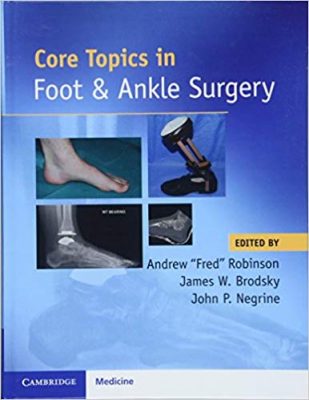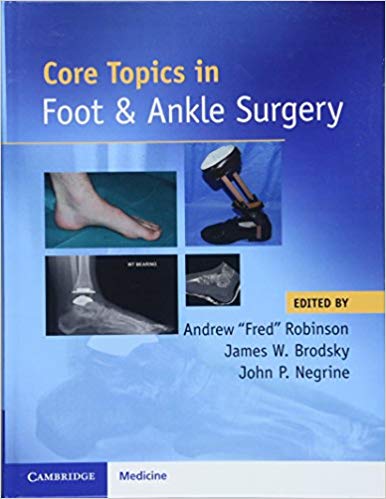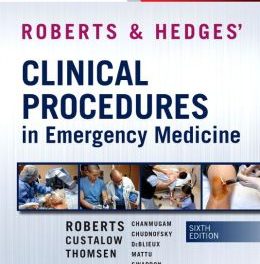 Editors: Andrew “Fred” Robinson, James W. Brodsky, and John P. Negrine
Editors: Andrew “Fred” Robinson, James W. Brodsky, and John P. Negrine
Publisher: Cambridge University Press – 426 pages
Book Review by: Nano Khilnani
The aim of the editors in producing and offering this book to you, the trainees and practitioners of foot and ankle surgery, is to share their own collective knowledge, insight, and wisdom gathered over their many years of learning and experience, but also to share with you, the resources gathered by the numerous contributors who have authored the chapters of this book, filling them with the valuable nuggets of information on a diverse range of subjects and topics relating to the human foot and ankle.
The key words in the above paragraph are ‘experience’, ‘insight’, ‘learning’, ‘knowledge’ and ‘wisdom’ All these require thinking and judgment, and these result in correct judgment (expressed in the form of an individual opinion or collective opinion) that lead in turn to good outcomes for the benefit of the patients.
The three editors point out in their Preface that a huge volume of information is readily available these days on the Internet, but what is important is be able to find out what is authentic, and I might add, reliable? Well, you have heard the saying ‘the proof of the pudding is in the eating’
Forty-five orthopedists, orthopedic surgeons, and radiologists from four countries – Australia, Ireland, the United Kingdom, and the United States – authored the 23 chapters of his book listed below:
- Clinical Examination of the Foot and Ankle
- Biomechanics of the Foot and Ankle
- Radiology of the Foot and Ankle
- Orthoses of the Foot and Ankle
- Amputations, Prostheses, and Rehabilitation of the Foot and Ankle
- Forefoot Pathology
- Mid-foot and Forefoot Arthritis
- Ankle and Hind-foot Arthritis
- The Cavus Foot
- Adult Acquired Flat Foot Deformity
- Sports Injuries of Foot and Ankle
- Ankle Arthroscopy
- Foot Arthroscopy and Tendonoscopy
- Heel Pain
- Disorders of the Tendo Achillis
- Rupture of the Tendo Achillis
- Benign Tumors of the Foot and Ankle
- Malignant Tumors of the Foot and Ankle
- The Diabetic Foot
- The Pediatric Foot
- Fractures and Dislocations of the Ankle
- Fractures and Dislocations of the Hind-foot and Mid-foot
- Fractures and Dislocations of the Forefoot
Let us take a close look at chapter 19 of this book entitled The Diabetic Foot beginning on page 321 and authored by Cameron R, Barr and Lew S. Schon. They begin this chapter by writing: “Management of the ever-increasing number of diabetic feet is an important issue for orthopedic foot and ankle surgeons. A thorough understanding of the pathophysiology and treatment options is necessary to provide optimal care for these patients. Within the multidisciplinary team, the orthopedic surgeon has a unique opportunity to play a critical role in the care of the diabetic patient.”
I think the “unique opportunity” remark could be interpreted as “unique authority” because in a severe case, the surgeon can warn the patients that their foot (or feet) will have to amputated unless they strictly follow immediately, all that he or she orders them to do.
According o the International Diabetes Federation, there were 463 million adults (aged 20 to 79) with diabetes at the end of 2019. By 2045, some 700 million people will have diabetes. The percentage of the population that has diabetes is higher in developed countries, Moreover, the percentage increases with age. This chapter has the following topics:
The Diabetic Foot
- Introduction
- Pathogenesis
- Neuropathy
- Vascular disease
- Immune Response
- Evaluation
- Neurologic Evaluation
- Vascular Evaluation
- Imaging Overview
- Clinical Problems and Treatment
- Ulceration
- Infections
- Charcot Arthroneuropathy
- Ankle Fractures
- Key Points
- Ulceration
- Charcot Neuroarthropathy
- Ankle Fractures
- References
- We urge readers to read this chapter thoroughly and look at the treatment options. We urge you to point out particularly the negative effects of rising A1c levels to your patients, and show them the photos of what happened to people whose glucose levels rose.
Editors:
Andrew “Fred” Robinson is Consultant Orthopedic Foot and Ankle Surgeon at Cambridge University Hospitals NHS Trust in Cambridge in the United Kingdom
James W. Brodsky is Clinical Professor of Orthopedic Surgery at the University of Texas Southwestern Medical School in Dallas, Texas.
John P. Negrine is Orthopedic Foot and Ankle Surgeon at Prince of Wales Private Hospital in Sydney, Australia.







